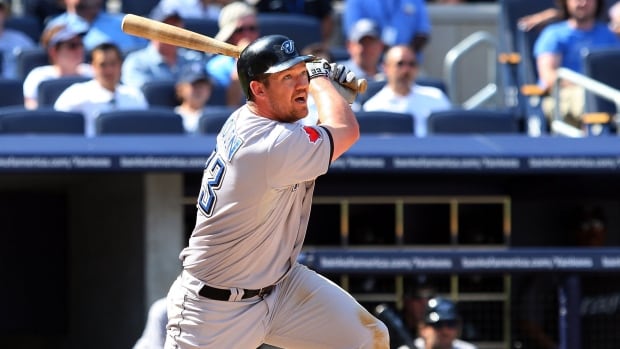This is an excerpt from The Buzzer, which is CBC Sports’ daily email newsletter. Stay up to speed on what’s happening in sports by subscribing here.
This year’s Baseball Hall of Fame class has a Blue Jays flavour.
Scott Rolen, a slick-fielding third baseman who played for Toronto in 2008 and ’09, was the only candidate to receive the required 75 per cent support from baseball writers when the results of their Hall of Fame voting were announced last night. Only 10 per cent of voters considered Rolen worthy of the Hall in 2018, his first year on the ballot. But his support rose steadily each year since then, and the sixth time was the charm.
Rolen will be enshrined in Cooperstown on July 23 alongside Fred McGriff, a slugging first baseman who spent his first five big-league seasons with the Blue Jays from 1986-90 and is much more readily associated with the team than Rolen. The Crime Dog was a Jays fan favourite, particularly in 1989 when he bashed an American League-high 36 home runs and led the AL in on-base-plus-slugging percentage. He placed sixth in AL MVP voting that year and helped Toronto win the AL East title alongside the likes of George Bell, Tony Fernandez, Kelly Gruber, Ernie Whitt, Dave Stieb, Jimmy Key and Tom Henke. A year later, McGriff and Fernandez were traded to San Diego in the franchise-altering blockbuster that netted Roberto Alomar and Joe Carter, stars of the Jays’ back-to-back World Series championships in 1992 and ’93.
But McGriff’s steadiness failed to wow the writers. He never reached even 40 per cent in their Hall of Fame voting before falling off the ballot after the maximum 10 years. McGriff got in last month via the Contemporary Baseball Era committee — one of the rotating groups that reconsider candidates from a certain time period after they’ve exhausted their eligibility with the writers (a job previously handled by the old Veterans Committee).
These 16-person panels are far more lenient, admitting such questionable candidates as Harold Baines, Jack Morris and Jim Kaat in recent years. One reason for that might be familiarity. The committee that elected McGriff, for instance, included former teammates Greg Maddux and Kenny Williams and former Blue Jays executive Paul Beeston. Baseball writers are certainly not immune to biases, but those tend to come out in the wash when nearly 400 ballots are cast.
Great Scott!<br><br>He’s one of the greatest third basemen of all-time! <a href=”https://t.co/PS4lC3YkMK”>pic.twitter.com/PS4lC3YkMK</a>
—@BlueJays
Rolen got into the Hall of Fame the old-fashioned way, but not without a few raised eyebrows. After being rejected on his first five tries, the former Phillie, Cardinal, Blue Jay and Red was named on 76.3 per cent of the writers’ ballots this year, clearing the bar for induction by just six votes. His 10.2 per cent debut in 2018 is by far the lowest first-ballot percentage by any player to later be elected. The previous record was 17 per cent, by Dodgers great Duke Snider.
Rolen likely benefited from weak competition this year. The only even semi-strong candidate joining the ballot was Carlos Beltran, a 435-homer man somewhat tainted by his role in the Astros cheating scandal. Holdovers Alex Rodriguez and Manny Ramirez certainly have the numbers to get in, and Gary Sheffield and Andy Pettitte are probably deserving as well, but all four are disqualified in the eyes of some voters because of their links to steroids. Barry Bonds, Roger Clemens and Sammy Sosa fell off the ballot last year for the same reason. The top vote-getters behind Rolen this year were Todd Helton, a first baseman with Coors Field-inflated batting stats; and Billy Wagner, a great closer but, still, a closer.
Having said all that, Rolen was an excellent player. Much of the skepticism about his Hall of Fame worthiness might stem from the fact that his skills were more subtle than others’. Rolen was a lifetime .281 hitter who reached 30 homers in a season only three times and topped out at 34 in 2004, when he placed fourth in NL MVP voting for St. Louis. Apart from that year, Rolen never cracked the top 13 in MVP voting, though he did win the 1997 NL rookie of the year award with Philly.
Baseball aficionados, however, recognize Rolen as a very good hitter and, above all, a superb defensive third baseman — perhaps the best of his era. He won eight Gold Gloves, and his rare combination of defensive and offensive ability is reflected in his 70.1 Wins Above Replacement, which tops seven of the 15 Hall of Famers who were primarily third baseman. That Rolen’s WAR likely played a significant role in his election speaks to the changing demographics of baseball writers, who as a group are getting younger and more statistically savvy with each passing year.


